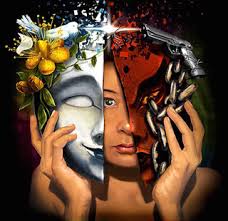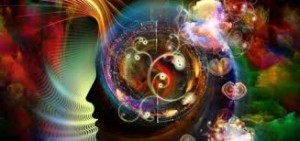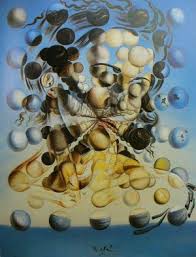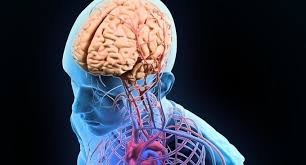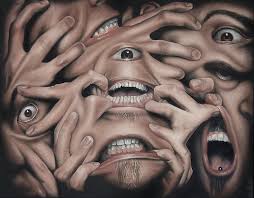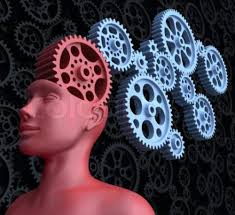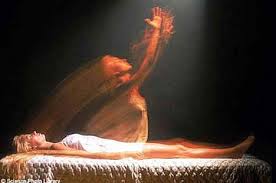No experiences are ever lost. The most private event is still written in the mass psyche of the species. In terms of past, present and future. We can only understand some concepts when they are given in that fashion. Taking that for granted, then, we are each born with the conscious knowledge of what has come before. Our brain is far from an empty slate, waiting for the first imprint of experience; it is already equipped with complete “equations,” telling us who we are and where we have come from. Nor do we wipe that slate clean, symbolically speaking, before we write our life upon it. Instead, we draw upon what has gone before: the experiences of our ancestors, back — in our terms now — through time immemorial.
The individual is born equipped with his or her humanness, with certain propensities and leanings toward development. He or she knows what human voices sound like even before his or her ear physically hear those sounds. He or she is born wanting to form civilizations as, for example, beavers want to form dams.
Children’s dreams activate inner psychological mechanisms, and at a time when their age makes extensive physical knowledge of their world impossible. In dreams they are given information regarding that environment.
Physical feedback is of course necessary for development, and a child deprived of it will not fully mature. Yet the development of dreams follow inner patterns that activate the child’s growth, and stimulate its development. There are even key dreams in infancy that serve to trigger necessary hormonal functioning. The child crawls and walks in dreams before those acts are physically executed — the dreams serving as impetus for muscular coordination and development.
Language is practiced by infants in the dream state, and it is indeed that mental practice that result in children speaking sentences far more quickly than otherwise would seem possible. The dream world, then, develops faster than physical experience. For some time the child is more secure there. Without dreaming there would be no learning, nor would there be memory.
Events are processed in dreams; put in the necessary perspective,, sorted and arranged. This is done when the conscious mind is separated from direct involvement with physical events. Dreams serve to dull the impact of the day’s events just past, while the meaning of those activities sifts through the various levels of the personality, settling into compartments of intent and belief. Often the true impact of an event does not occur until it has been interpreted or re-experienced through a dream.
Because dreams follow paths of association, they break through time barriers, allowing the individual to mix, match, and compare events from different periods of his or her life. All of this is done somewhat in the way that child plays, through the formation of creative dream dramas in which the individual is free to play a million different roles and to examine the nature of probable events from the standpoint of “a game.”
In play, children adopt certain rules and conditions “for a time.” The child can stop at any time. Innumerable play events can occur with varying intensity, yet generally speaking the results cease when the game is over. The child plays at being an adult, and is a child again when his or her parents call, so the effect of the game are not long lasting. Still, they are an important part of a child’s daily life, and they affect the way he or she relates to others. So in dreams, the events have effects only while dreaming. They do not practically intrude into waking hours — the attaching bear vanishes when we open our eyes; it does not physically chase us around the bedroom.
The great versatility of the species in its reaction to events is highly dependent upon this kind of dreaming capacity. The species tries out its probable reactions to probable events in the dream state, and hence is better prepared for action “in the future.”
To some extent dreams are participated in by cellular consciousness also, for the cells have an equal interest in the individual’s psychic and body events. In a way dreams are of course composite behavior — mental and psychic games that suit the purposes of mind and body alike. Feedback from the physical environment may trigger an alarming dream that causes the individual to awaken.
Certain chemicals may affect dreaming by altering the cells’ reality. Many sleeping pills are detrimental, in that they inhibit the body’s natural response to its environment while an individual is sleeping , and deaden the intimate relationship between the dreaming mind and the sleeping body.
Because we have very limited ideas of what logic is, it seems to us that the dreaming self is not critical, or “logical”; yet it works with amazing discrimination, sifting data, sending some to certain portions of the body, and structuring memory. Sleeping pills also impede the critical functions of dreams that are so often overlooked. The facts are that dreams involve high acts of creativity. Theses are not only intuitively base, but formed with a logic far surpassing our ideas of that quality. These creative acts are then fitted together through associative processes that come together most precisely to form the dream events.
It should certainly be obvious that dreams are not passive events. Some rival physical events in intensity and even effect. They involve quite active coordination on the part of mind and body, and they bring to the individual experience otherwise unattainable.
Small amounts of ordinary stimulators, such as coffee or tea, taken before bed when we are already sleepy, have a beneficial effect in stimulating dream activity and aiding dream recall. Too large a serving, of course, could simply waken us, but small amounts taken if we are already drowsy allow us to take our conscious mind into the dream state more readily, where it can act as observer.
A very small amount of alcohol can also serve. Anything that suppresses activity will also suppress our dreams. As is known, anyone deprived of sufficient dreaming will most likely begin to hallucinate while in the waking state, for too much experience has built up that needs processing. There are many secondary hormonal activities that take place in the dream state and at no other time. Even cellular growth and revitalization are accelerated while the body sleeps.
